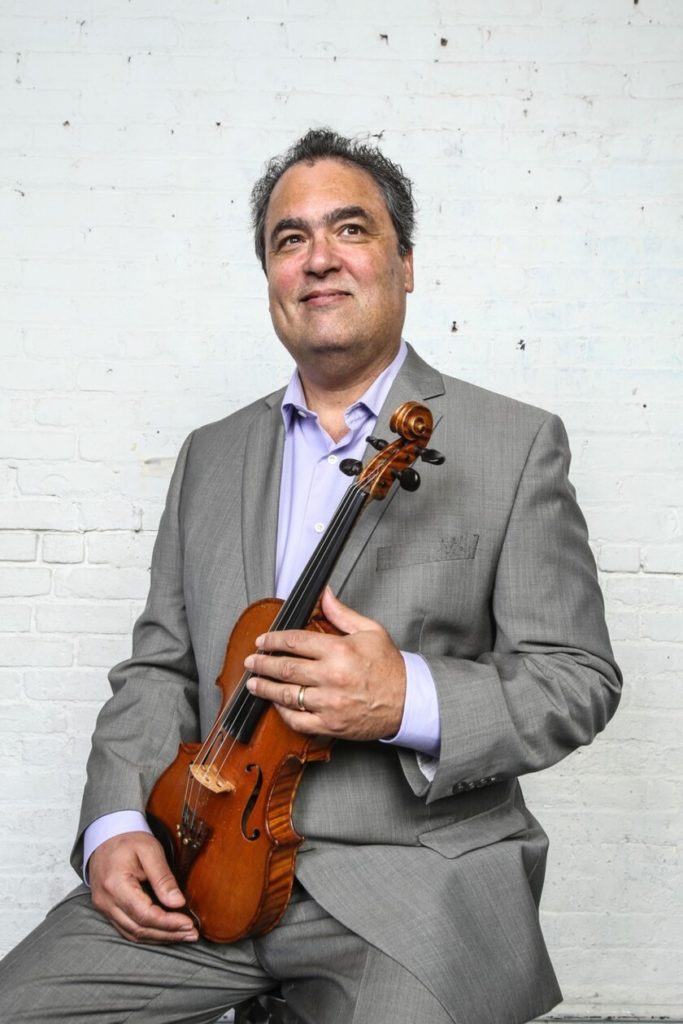
Theme and Variants (2021)
PRIMAVERA II the rabbits
from the composer
When presented with two works for inspiration— one the ornate, subtly disturbing Botticelli; the other Charline von Heyl’s dark response imbued in the context of the COVID driven sociopolitical upheaval of this past year, the historic life of the mind floods with images of the psychedelic sixties. Without question this phenomenon is where the current moment finds its DNA. Vietnam becomes Syria, the anti-war movement becomes defunding the police, but the consistent theme is that the foundations of society were commensurately shook to the core, both then and now; mirror images.
Hence, this solo work finds its fulcrum in the artist of indivisible idiom and prodigal son of counterculture: Jimi Hendrix. The relentless menacing, yet fiercely joyous quality in his music that evokes the carnal ‘voodoo child’ is what drives the tone and mood, where the musical connection is aural and slightly subliminal. The so-called ‘Hendrix chord’, i.e., dominant seven/sharp nine that we hear in “Purple Haze”, fits perfectly into the eight-tone pitch set exclusively used in this work, which also winks of an Indian Raga. The title of the work reflects a less than light-hearted reference to the terror of the evolving pandemic, encoded in a standard structure, theme & variations, that all at once is both raveling and unraveling. These intentionally summoned characteristics are those seen in the aforementioned Botticelli & Heyl, but are also appropriately felt in the present tense during the age of COVID.
These grave and primal artistic concepts are clearly descendants of the time we are living in— death, upheaval, confusion, et al. Just as appropriately, this work adopts a lightness and ease to symbolize the prevailing mindset that will carry the day. It is a work that one can viscerally sense is fun to play— phrases meant to be tossed off like a quasi-cello/fiddle tune, albeit of the darker variety. In that spirit, the piece ends with a resounding C major chord, signifying the arrival of the vaccine, dousing the blaze in an instantaneous flash of release. Hopefully no COVID second movement in the works…
bio
David Balakrishnan, violinist/composer and founder of the Grammy winning Turtle Island Quartet,” was born in Los Angeles, California in 1954. After graduating from UCLA in 1976, he quickly established his reputation as a talented young improvising violinist, appearing on many recordings and making guest appearances with the David Grisman Quartet and jazz violin legend Stephane Grappelli. In 1981 he undertook a Masters Degree program in music composition at Antioch University West, where his groundbreaking work integrating stylistic elements of jazz, European classical, American folk and Indian classical music led to the creation of the TIQ in the fall of 1985.
Under his direction, Turtle Island has won two Grammy awards and Balakrishnan himself has been nominated six times, the most recent being a 2015 nomination in the instrumental composition category for his piece, “Confetti Man.” Several distinguished musicians have played with the TIQ, including trumpeter Terence Blanchard, clarinetist Paquito D’Rivera, vibraphonist Stefon Harris, guitar legends Leo Kottke and the Assad brothers, pianists Billy Taylor, Kenny Barron, Cyrus Chestnut and Ramsey Lewis, singers Tierney Sutton and Nellie McKay, and the Ying Quartet.
Balakrishnan has been awarded numerous composing grants, including commissions from the National Endowment for the Arts, Meet The Composer foundation, Lied Center of Kansas, and conductor Marin Alsop. In 2015 Balakrishnan received Chamber Music America’s Classical Commissioning Program grant, supporting a full-length work “Aeroelasticity: Harmonies Of Impermanence,” recorded on TIQ’s 2017 release, “Bird’s Eye View.” His composition “The Second Wave” is included on Terence Blanchard’s upcoming fall 2021 Blue Note release featuring the TIQ with Blanchard’s E-Collective, “Absence.”
